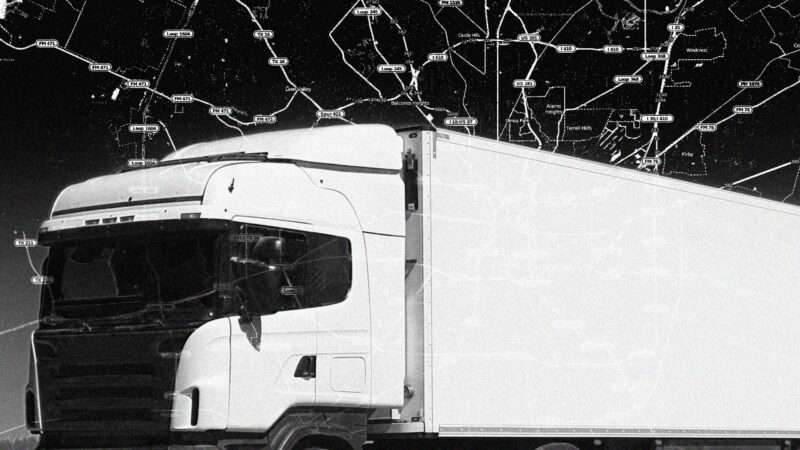
On Monday, dozens of bodies were found in a tractor-trailer outside San Antonio, Texas, in an incident that left 53 migrants dead. They included 27 Mexicans, 14 Hondurans, seven Guatemalans, and two Salvadorans who had been packed in stifling conditions. Some victims were as young as 13. The tragic episode is now thought to be the deadliest smuggling incident on the U.S.-Mexico border.
Texas Gov. Greg Abbott was quick to blame the Biden administration's "open border policies" for the incident. He and other immigration hardliners favor the "prevention through deterrence" enforcement strategy, which holds that unauthorized migration will dwindle or eventually stop if the act of migrating is simply made difficult enough.
But what they fail to mention is the black market created by a supposedly impenetrable border. Eliminating safe, legal, and predictable migration pathways doesn't stop immigration from happening. It just funnels migrants into more dangerous crossings and riskier methods of reaching American soil. Willing to attempt the passage no matter the cost, those migrants often look to smugglers as their best option.
That's exactly what happened earlier this week. The migrants found dead in the tractor-trailer perished because prohibition doesn't work, and bad actors are empowered to take advantage of the high profits that come with an illicit market.
Migrant-smuggling networks have become more sophisticated as immigration enforcement has ramped up. "In the past, smuggling organizations were mom and pop. Now they are organized and tied in with the cartels," Craig Larrabee, acting special agent in charge for Homeland Security Investigations San Antonio, told CNN. "So you have a criminal organization who has no regard for the safety of the migrants. They are treated like commodities rather than people."
Smuggling is a lucrative business. Migrants from Guatemala, Honduras, and El Salvador pay smugglers roughly $1.7 billion each year to reach the U.S., according to research from the Migration Policy Institute, World Food Programme, and Civic Data Design Lab at the Massachusetts Institute of Technology. That's largely a result of high demand and the difficulties that smugglers navigate as they transport people north. As the Cato Institute's Alex Nowrasteh pointed out in 2014:
The price of smuggling is an indication of the effectiveness of immigration enforcement along the border. The first effect of increased enforcement is to decrease the supply of human smugglers. As the supply of human smugglers decreases, the price that remaining human smugglers can charge increases. Before border enforcement tightened in the early 1990s, migrants typically paid about $725 (2014 dollars). Currently, unauthorized migrants from Central America are paying around $7500.
By 2008, Nowrasteh writes, "18 percent of apprehended unlawful immigrants reported hiring a human smuggler"—a nearly six-fold increase compared to 1999. Now, U.S. Immigration and Customs Enforcement calls human smuggling "a daily occurrence" on the southern border. As more people turn to smugglers—or cross into the U.S. on foot without their help—deadly events will only increase. The remains of over 550 migrants were found at the border in 2021, and 2022 is on track to be even worse.
The majority of migrants attempting to cross the southern border into the U.S. since the beginning of the pandemic have been expelled under Title 42, a public health measure that allows immigration officials to immediately turn away noncitizens and bar them from applying for asylum. Though "the number of encounters at the border fell by half in fiscal year 2020 compared to the previous year," writes The Marshall Project, "the number of encounters that required a rescue operation doubled to the highest rate in at least a decade." What's more, "the death rate also nearly doubled during the same period, from 35 to 62 migrants found dead for every 100,000 migrants encountered."
Simply clamping down the border further won't work. And some of the specific policy responses to this week's tragedy might not do much to solve the underlying issues that result in migrant deaths. Abbott has promised to step up truck inspections at the border, but several immigration experts interviewed by NPR, including a former Department of Homeland Security investigator, "believe the migrants were not likely brought over the border from Mexico in the truck." It isn't uncommon for migrants to first cross the border on foot, evading Border Patrol checkpoints, and later board a truck.
Research has shown that improving access to legal immigration pathways like temporary work visas helps reduce unauthorized migration. After spending so much time emphasizing the benefits of hardline immigration enforcement, policy makers would do well to remember that such an approach is as deadly as it is ineffective.
The post 'Prevention Through Deterrence' Is How You Get 53 Dead Migrants in the Back of a Truck appeared first on Reason.com.







